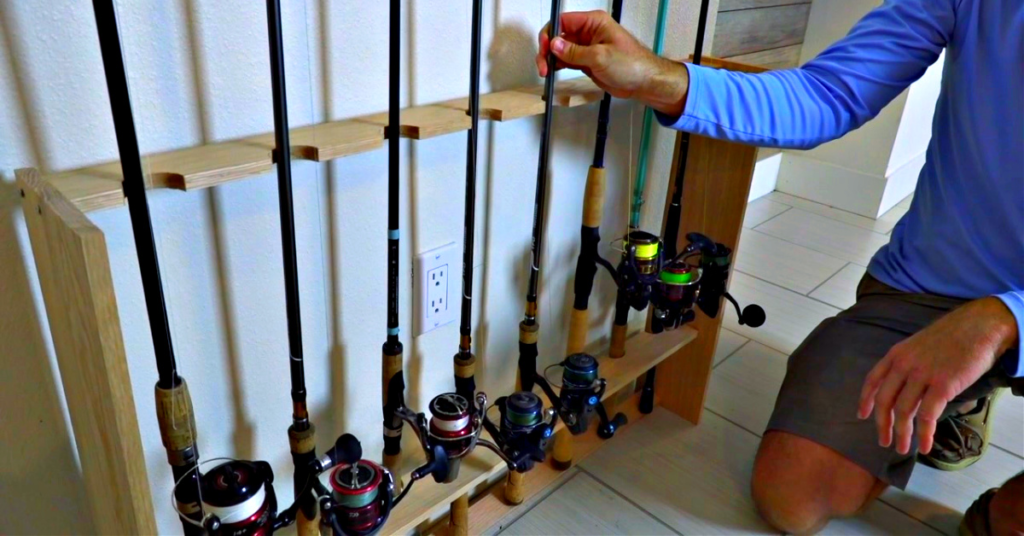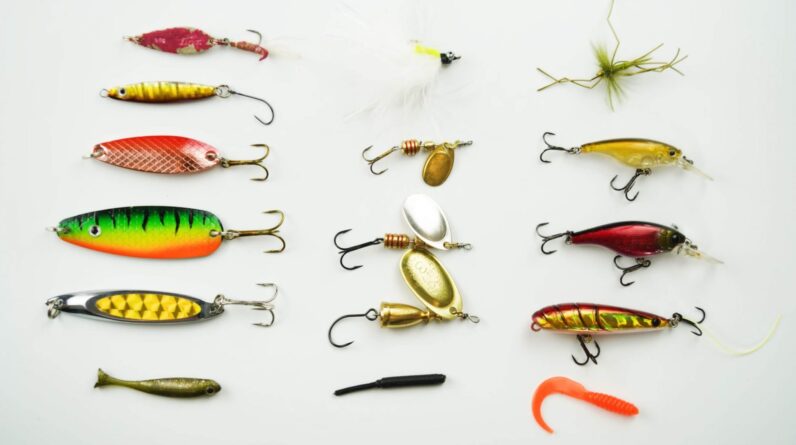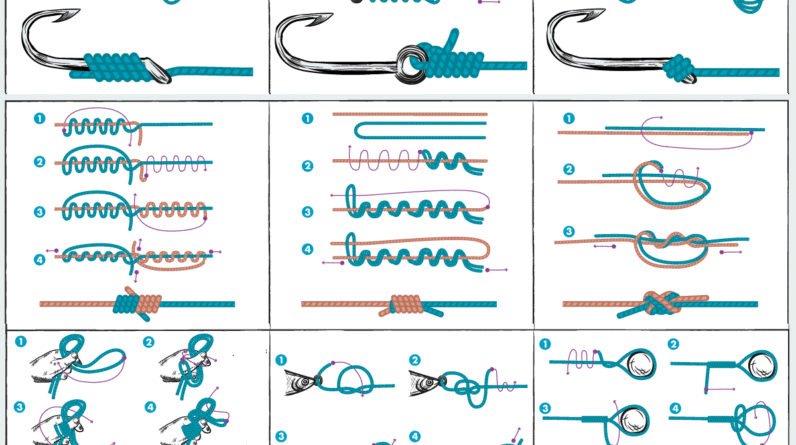Fishing rods stand as indispensable instruments for anglers, forming the very essence of fruitful fishing pursuits. Irrespective of whether you’re a fervent devotee of angling or a laid-back weekend fisher, the proper upkeep of your fishing rods holds paramount importance in elongating their lifespan and optimizing their functionality. Within this all-encompassing manual, Cheerfulfisherman.com undertakes a deep dive into the nuances of fishing rod maintenance, furnishing you with a wealth of seasoned advice and advanced techniques to preserve your gear in peak condition. By following these insights diligently, you can ensure that your equipment remains primed and prepared for action each time you venture onto the waters.
To truly grasp the essence of fishing rod maintenance, it’s crucial to understand the key components of these essential tools. From the rod itself to the guides, reel seat, and handle, every part plays a pivotal role in the rod’s overall performance. Regular cleaning and inspection are vital to identify any signs of wear or damage, allowing for timely repairs or replacements as needed. Additionally, proper storage practices, such as keeping your rods in a dry and secure environment, can significantly extend their longevity.
Beyond basic upkeep, mastering advanced techniques like rod tuning and guide alignment can elevate your fishing experience to new heights. By fine-tuning the action and power of your rod to match your preferred fishing style and target species, you can achieve greater accuracy and control in your casts and retrieves. Similarly, ensuring that the guides are properly aligned not only prevents line snags and tangles but also promotes smoother casting and increased casting distance.
Moreover, investing in high-quality rod maintenance products, such as cleaning solutions, lubricants, and protective coatings, can further enhance the durability and performance of your gear. These specialized products are specifically formulated to combat corrosion, reduce friction, and safeguard sensitive components against environmental wear and tear. Incorporating them into your regular maintenance routine can help shield your investment from the harsh realities of the fishing environment, ensuring that your rods remain in pristine condition for years to come.
In essence, fishing rod maintenance is not just a chore but a fundamental aspect of responsible angling. By treating your gear with care and attention, you not only prolong its lifespan but also enhance its performance and reliability on the water. So, whether you’re a seasoned angler or a novice enthusiast, take the time to learn and implement proper maintenance techniques—it’s the surefire way to keep your fishing rods cheerful and ready for action.

Step 1
Before delving into maintenance methods, it’s crucial to grasp the intricate anatomy of a fishing rod. The rod blank serves as its backbone, determining its strength and flexibility. The reel seat secures the reel in place, ensuring smooth operation during casting and retrieval. Guides, often made of materials like ceramic or stainless steel, guide the fishing line along the length of the rod, minimizing friction for efficient casting. The handle provides grip and control, allowing anglers to maneuver the rod with precision. Understanding these components and their roles is paramount for maximizing the performance and longevity of your fishing gear. Let’s delve deeper into their functionalities to enhance your fishing experience.
Step 2
Regular maintenance of your fishing rod is crucial for its longevity and optimal performance. Over time, dirt, debris, and saltwater residue can build up, causing corrosion and reducing its effectiveness. This chapter emphasizes the significance of cleaning your fishing rod after every use. Delving into step-by-step instructions to properly clean it, ensuring its durability and peak performance. Neglecting this essential task can lead to costly repairs or even the need for replacement. By dedicating time to regular cleaning, you not only extend the lifespan of your rod but also enhance your fishing experience, ensuring that it performs at its best every time you cast your line.
Step 3
Examining for Wear and Tear. Even with meticulous upkeep, fishing rods are prone to wear and tear over time. Regularly inspecting your rod for damage is crucial to catch potential issues early on. Detail prevalent types of damage, including cracks, misaligned guides, and reel seat problems, and offer practical solutions for addressing them. Additionally, delve into preventive measures to prolong the lifespan of your fishing rod and ensure optimal performance on your angling adventures. By staying vigilant and proactive in maintenance, you can keep your beloved rod in top condition for years to come, enhancing your fishing experiences manifold.

Step 4
Upgrading Your Fishing Gear: The Importance of Guides and Tip Tops. Guides and tip tops are indispensable components in the world of fishing, facilitating seamless casting and retrieval by guiding your fishing line. However, prolonged use can lead to wear and tear, compromising the efficiency of your rod. Recognizing the signs indicating the need for replacement is essential to maintain peak performance.
We need to understand the importance of guides and tip tops. They play a key role in improving your fishing experience. We’ll look at signs of wear and tear. Then, we’ll provide clear steps to replace them. This will keep your gear in great shape for successful fishing trips.
Step 5
Ensuring the longevity and performance of your fishing gear involves more than just focusing on the rod itself. Reel seats and handles, though often neglected, are vital components that directly impact your angling experience. Neglecting their upkeep could lead to discomfort and compromised control while fishing. Therefore, it’s essential to prioritize their maintenance. Delve into comprehensive methods for cleaning, lubricating, and safeguarding reel seats and handles to ensure they remain in prime condition. By adopting these techniques, you not only extend their lifespan but also elevate your comfort and mastery on the water, enhancing every fishing excursion.

Step 6
Ensuring the longevity of your fishing rod entails proper storage practices to shield it from potential damage during periods of inactivity. Prolonged exposure to harsh environmental conditions such as extreme temperatures, moisture, and sunlight can gradually deteriorate your rod. Get into optimal methods for storing your fishing rod both indoors and outdoors. Get insights into rod racks, cases, and sleeves. They protect your gear. Ensure your fishing rod stays in great shape. Ready for your next adventure.
Step 7
Long-Term Maintenance Strategies to Prolong the Lifespan of Your Fishing Rod. Keeping your fishing rod in pristine condition requires more than just routine cleaning and inspection. Incorporating a few long-term maintenance strategies can significantly extend its lifespan. Applying protective coatings, such as wax or varnish, not only enhances its durability but also shields it from environmental wear and tear. Moreover, steering clear of common mistakes, such as improper storage or neglecting to rinse off saltwater residue after use, can prevent premature damage to your gear.
By implementing these expert tips alongside regular maintenance routines, you can ensure that your fishing rods remain in optimal condition for many years of angling adventures.

Fishing Rod Maintenance!!
Ensuring your fishing rods remain in prime condition is paramount to guaranteeing peak performance and longevity. This guide helps you maintain your gear. It offers valuable insights and techniques. Your gear will be ready for your next fishing trip. By adhering to these recommendations, you’ll preserve your equipment’s quality, ensuring countless memorable fishing experiences for years to come.
Regular cleaning is the cornerstone of effective rod maintenance. Begin by gently rinsing your rods with freshwater after each use to remove salt, debris, and other contaminants that can deteriorate the rod’s material over time. Use a soft cloth or sponge to wipe down the rod, paying close attention to the guides and reel seat. For stubborn dirt or grime, a mild detergent solution can be applied sparingly.
Inspect your rods thoroughly after cleaning for any signs of damage or wear. Check the guides for cracks or nicks, as these can cause abrasions to your fishing line and diminish casting performance. Additionally, examine the rod blank for any splintering or weakness, particularly near the joints or ferrules.
Storage is another critical aspect of rod maintenance. When not in use, store your rods in a cool, dry place away from direct sunlight and extreme temperatures. Hanging them vertically or horizontally in a rod rack or storage case can help prevent warping or bending.

Periodically lubricate the reel seat, handles, and ferrules with a high-quality lubricant to prevent corrosion and ensure smooth operation. Be sure to use products specifically designed for fishing equipment to avoid damaging sensitive components.
Finally, consider investing in rod covers or sleeves to provide an extra layer of protection during transportation and storage. These inexpensive accessories can help prevent scratches, dings, and other damage that can occur when rods are bumped or jostled.
Incorporate maintenance practices. Extend lifespan of fishing rods. Ensure peak condition for next trip. Proper care for gear. Continued exceptional performance. Unforgettable experiences on water.






